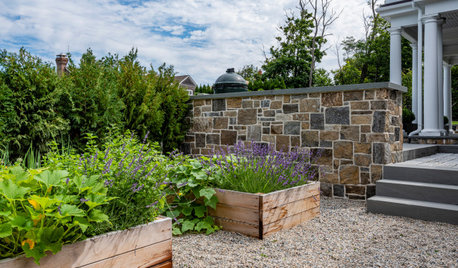Can I save this Weeping Fig?
RaptorRed
9 years ago
Related Stories

HOUSEPLANTSPlay Up Some Fiddleleaf Figs for a Lively Indoor Tune
Strike a dramatic chord in a minimalist scene or a country note in a rustic setting — fiddleleaf fig plants harmonize with any style
Full Story
GARDENING GUIDESYes, You Can Grow Food in a Shady Yard
Your shady garden doesn’t have to be forever barren. Berries, herbs and other shade-loving plants can produce a delicious bounty
Full Story
MOST POPULARMeet a Lawn Alternative That Works Wonders
Carex can replace turfgrass in any spot, is low maintenance and adjusts easily. Add its good looks and you’ve got a ground cover winner
Full Story
CONTAINER GARDENSContainer Garden Basics: How and When to Water Potted Plants
Confused about soil moisture, the best time to water and what watering device to use? This guide can help
Full Story
EARTH DAYGrow a Beautiful Garden With Ecofriendly Greywater
Reducing home water waste means lower bills and a healthier planet. Here's how to set up a greywater home irrigation system that can help
Full Story
DECORATING GUIDESThe Dumbest Decorating Decisions I’ve Ever Made
Caution: Do not try these at home
Full Story
SAVING WATERHouzz Call: Are You Letting Go of Your Lawn?
Many facing a drought are swapping turf for less thirsty plantings. If you’re one of them, we’d like to hear about it
Full Story
SAVING WATERXeriscape Gardens: How to Get a Beautiful Landscape With Less Water
Conserve water and make gardening much easier with the xeriscape approach’s 7 principles
Full Story
GARDENING GUIDES9 Ways to Be Water-Wise in the Edible Garden
Consider these tips to get a healthy backyard crop that uses less water
Full Story
LANDSCAPE DESIGNCalifornia Says Goodbye to the Sprawling Ornamental Lawn
New state rules will effectively limit turfgrass to 25 percent of the landscape in most new and renovated yards
Full Story










RaptorRedOriginal Author
RaptorRedOriginal Author
Related Professionals
Ashland Landscape Architects & Landscape Designers · Beachwood Landscape Architects & Landscape Designers · Otsego Landscape Architects & Landscape Designers · Middletown Landscape Contractors · Alpharetta Landscape Contractors · Huntley Landscape Contractors · Los Banos Landscape Contractors · North Plainfield Landscape Contractors · Pacifica Landscape Contractors · Pleasant Hill Landscape Contractors · Saint John Landscape Contractors · White Bear Lake Landscape Contractors · Whittier Landscape Contractors · East Patchogue Interior Designers & Decorators · Suisun City Interior Designers & Decoratorsalisonoz_gw
greenman28 NorCal 7b/8a
RaptorRedOriginal Author
tapla (mid-Michigan, USDA z5b-6a)
RaptorRedOriginal Author
tapla (mid-Michigan, USDA z5b-6a)
RaptorRedOriginal Author
tapla (mid-Michigan, USDA z5b-6a)